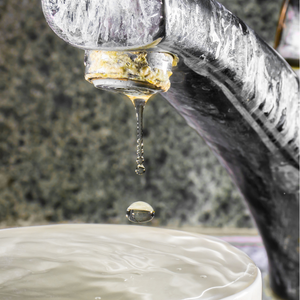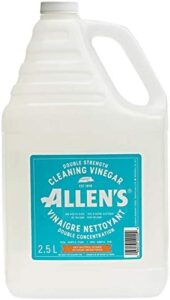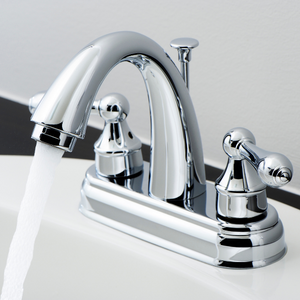How to Remove Hard Water Residue from Faucets
Have you ever noticed a white, chalky residue on your sinks and faucets? Learn how to remove hard water residue from faucets If you are moving out it needs to be taken care of to get your damage deposit back, as a condition of sale, or as a nice gesture for the new owner. If you live in an area with hard water (check your municipal water site for information on this), this residue is most likely hard water deposits. While this residue is not harmful, it can be unsightly and difficult to remove. With a little elbow grease and the right supplies, though, you can remove that pesky mineral in no time!
We have a whole list of cleaning tips if you want to learn more here.
What Causes Hard Water Deposits?
Hard water is water that contains high levels of minerals, such as calcium, magnesium and bicarbonates. These minerals can come from a variety of sources, such as soil and rocks. Mountainous areas are very likely to have hard water. When water containing these minerals comes into contact with metal surfaces, such as your faucet, it can leave behind a chalky residue.

Assess - What are they made of?
Do not use abrasives!
Immediate damage can be caused by both of these from scratches to complete discoloration.

1 – Chrome, 2 – Brushed Nickel, 3 – Stainless Steel
Image from: Kitchen Cabinet King
Gather Supplies
Once you have assessed the material, it’s time to gather your supplies. For this project, you will need:
- Soap (we recommend Dawn),
- Cleaning Vinegar (full strength)
- 2-5 microfiber cloths
- Small scrub brush (old toothbrush)
- Do not dilute the cleaning vinegar for soap scum and hard water stains. You need full strength on this job.

How to Remove Hard Water Deposits
There are a few different ways that you can remove hard water deposits from your faucets. First, use soap and the cloth to get rid of any soaps, oils, and easy to remove hard water from all areas using a cloth. Do this on all sides, top, and where you can’t see underneath. Spray with full strength cleaning vinegar and let sit. Come back use a small scrub brush to scrub around the taps and underneath the faucet. Then rinse well and wipe with a new cloth.
Ensure the counter is not marble, quartz or granite as vinegar over time and repetitive use breaks down the finish on stone surfaces which will leave a dull and etched surface over time resulting in permanent damage.
Major Problem Cleaning Method
You’ve hit a snag, the above method isn’t good enough. Time to do the wrap. Take your remaining clothes and soak them in vinegar, not to the point they are dripping, but wet enough they have moisture. Take them and wrap the faucet in them. Wait 15 minutes. Come back, use a small scrub brush to scrub around the taps and underneath the faucet, rinse well, wipe it clean and re-wrap as necessary until clean. The wrap works well as it allows you to get around the knobs/lever, under the faucet, and even around the spout.

All Done!
Now that you know how to remove hard water residue from faucets, you can apply this to other areas where hard water is built up and make your life easier rather than using abrasives or harsh chemicals.
